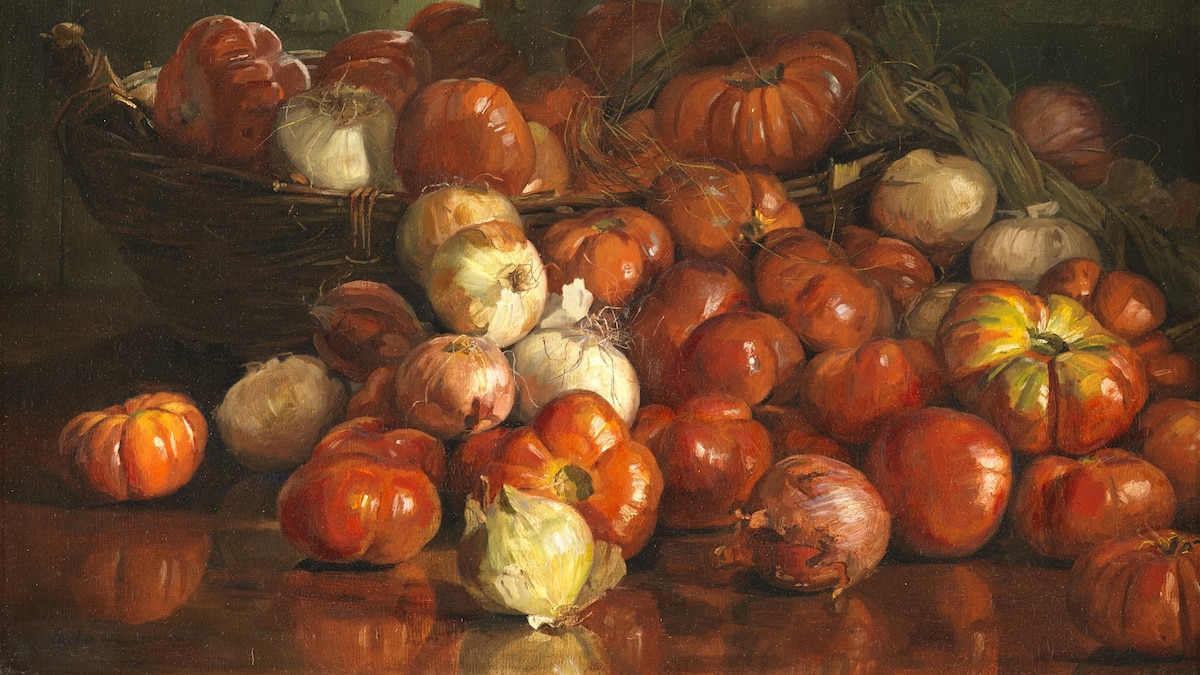Now Reading: Sinful. Poisonous. Stinky? How tomatoes overcame their wicked reputation
-
01
Sinful. Poisonous. Stinky? How tomatoes overcame their wicked reputation
Sinful. Poisonous. Stinky? How tomatoes overcame their wicked reputation

While Salem, Massachusetts gets all the hype for its infamous 1692 witch trials, there’s another city called Salem—this time in New Jersey—that’s tied to a rather legendary tale where tomatoes were the enemy.
(Witch hunts were common in the 17th century. Here’s what made Salem infamous.)
There are many myths and legends about how the tomato was once seen as the so-called “poison apple,” but how it lost its evil reputation and became a beloved piece of produce is a complicated story. According to historian Andrew F. Smith, author of The Tomato in America: Early History, Culture, and Cookery, the tale involves a farmer and horticulturist who went to brazen lengths to prove the tomato was safe to eat.

Aristocrats would fall ill or die when they consumed tomatoes—but it was the plates they were eating on that posed the problem.
Photograph by O. F. Cook, Nat Geo Image Collection
In 1544, Italian herbalist Pietro Andrea Mattioli classified the tomato as both a nightshade and a mandrake—a category of food known as an aphrodisiac. The tomato was often referred to as a “love apple” and kept at arm’s length.
Later in 1597, prominent English herbalist and botanist John Gerard called tomatoes “corrupt” and “of rank and stinking savor” in his book, Herbal. This statement essentially sealed the tomato’s fate in Great Britain and later the American colonies.
By the 18th century, the tomato was nicknamed the “poison apple” because aristocrats would fall ill or die after consuming them. But it wasn’t the consumption of the tomato that triggered their illness or death. Instead, it was the plates the wealthy used to dine on—specifically the pewter plate. These plates contained high levels of lead that, when mixed with the natural acidity of the tomato, caused lead poisoning.
(How the simple fork almost tore apart the fabric of society.)
In his book, Smith notes that some of the earliest references of tomatoes in American colonies were in the late 18th century, but people were growing the fruit out of curiosity, not eating them. “For those who came to America in the colonial period, it just wasn’t on their agenda,” says Smith.
The rise in tomatoes with myth and folklore
According to Smith, large-scale immigration to America in the late 19th and early 20th centuries—particularly from Italians, who brought with them the invention of pizza—contributed to the eventual consumption of tomatoes.
(Think you know who invented pizza? These foods have surprising global origins.)
You May Also Like
But it was Robert Gibbon Johnson, a farmer and horticulturist from Salem, New Jersey, who had a lasting impression on the general public’s opinion of tomatoes. According to legend, Johnson stood on the Salem’s courthouse steps in 1820, eating a basket full of tomatoes for all the public to see. When he didn’t die of poison, word spread that tomatoes were safe to eat.

Despite there being no record of Johnson’s actions on the courthouse steps in Salem, that didn’t stop this New Jersey town from playing along with the tale.
Photograph by Justin Locke, Nat Geo Image Collection
Smith did find evidence that Johnson actually grew tomatoes, so “it’s certainly possible that his work encouraged others to consume,” he says. But Smith notes that a lot of other folks were growing tomatoes at the time, so this isn’t the sole reason the fruit became popular. By the 1830s, an array of tomato cookbooks and recipes were being published in America.
Rich Guido, executive director and librarian of the Salem County Historical Society, believes this tall tale is typical of a small rural town that’s passionate about their local history, even if the story may have a lot of half-truths.
“We’ve always had a connection with history and being a rural agricultural community—that’s why the tomato story really comes into play,” says Guido.
How the tomato lives on in Salem
Although there is no physical evidence or documentation of Johnson’s tomato trial, that hasn’t stopped people from embracing this tale. Sickler eventually recounted the story to Harry Emerson Wildes, an American sociologist and historian, who wrote about it in his 1940 book, The Delaware. Stewart Holbrook added further embellishment to the event in his 1946 book, Lost Men of American History.
On January 30, 1949, CBS radio gave the narrative even more notoriety when it broadcast a reenactment of Johnson famously eating a tomato on the show, You Are There; Sickler acted as a historical consultant for the show.
In New Jersey’s Salem, from 1989 till 2022, the town held the Salem Tomato Festival, where locals and visitors would watch reenactments of Johnson’s event, wear costumes, and, of course, eat tomatoes. However, according to Guido, the festival was put on hold when it was revealed that Johnson was a slaveholder to Amy Hester Reckless.
As to why Salem and New Jersey embraced this legendary tale as the obscure history of the Garden State, Curtis Harker, records manager at the County of Salem, thinks it’s the love of the Salem tomato—which also involved a certain ketchup company at one point.
(How Henry Heinz used ketchup to improve food safety.)
“It’s a combination of the love of the huge flavorful Salem tomato plopped on a hamburger, Heinz Company’s citywide aroma making ketchup in Salem City for 100 years until 1977, and the amusing story of Johnson bravely eating a tomato on the courthouse steps,” he says.
Although the lore around Johnson has been tarnished by his slaveholding, the tomato continues to maintain its grip on this small New Jersey town.





















